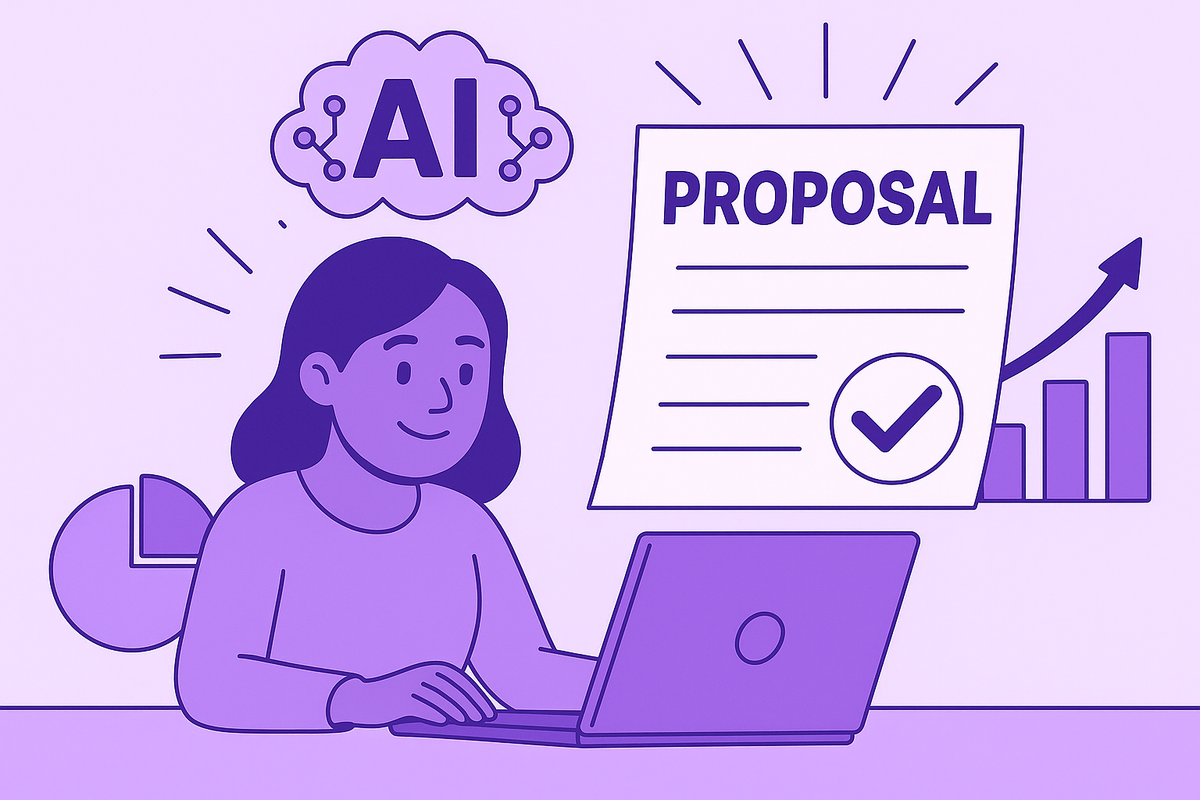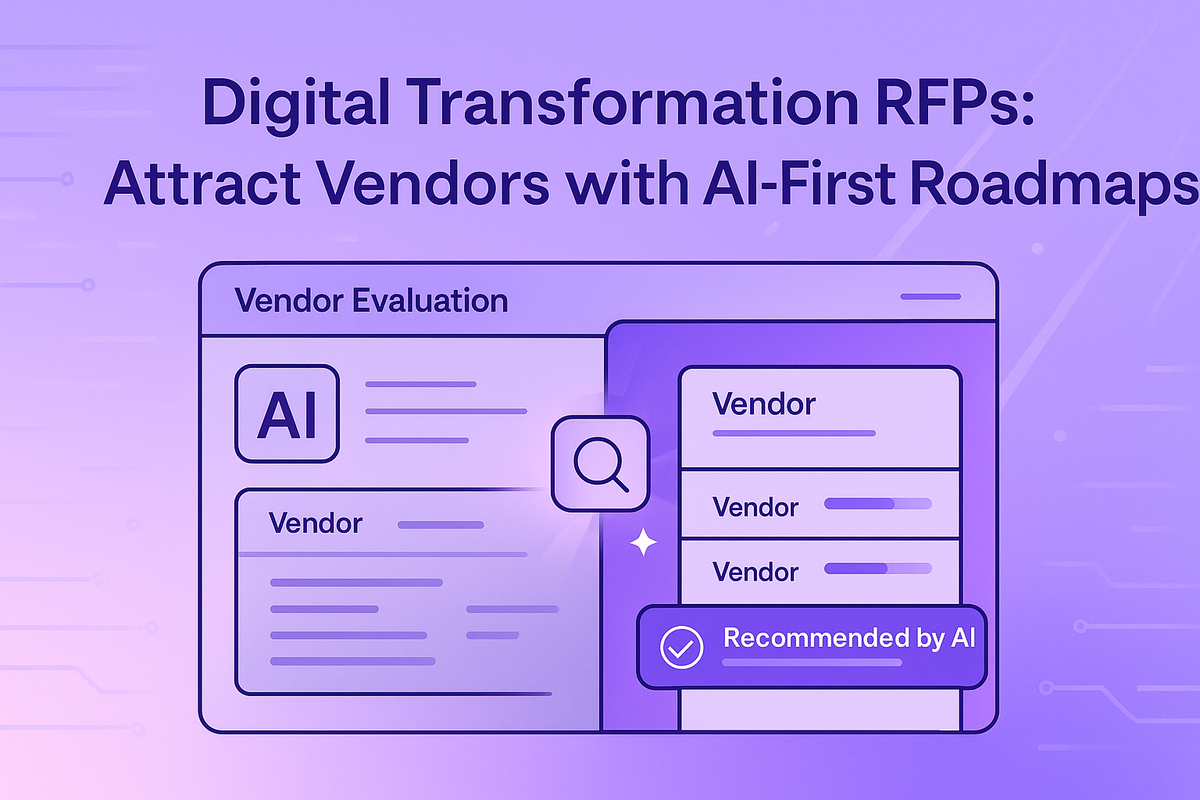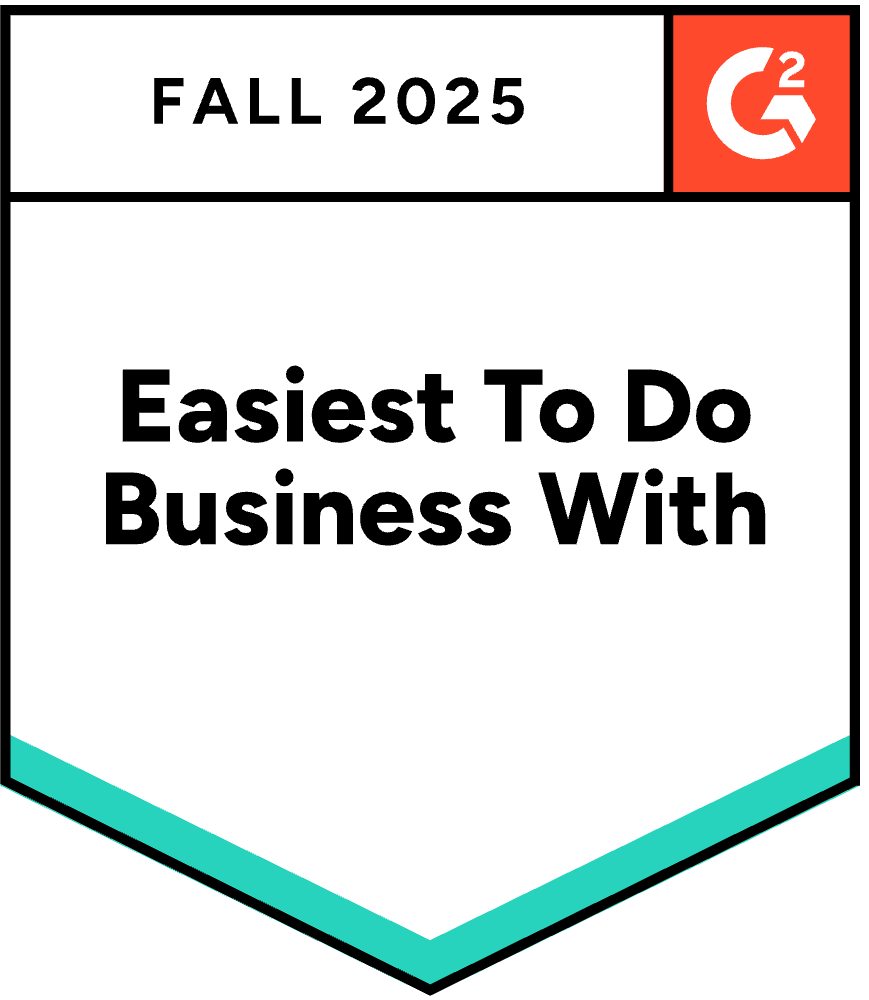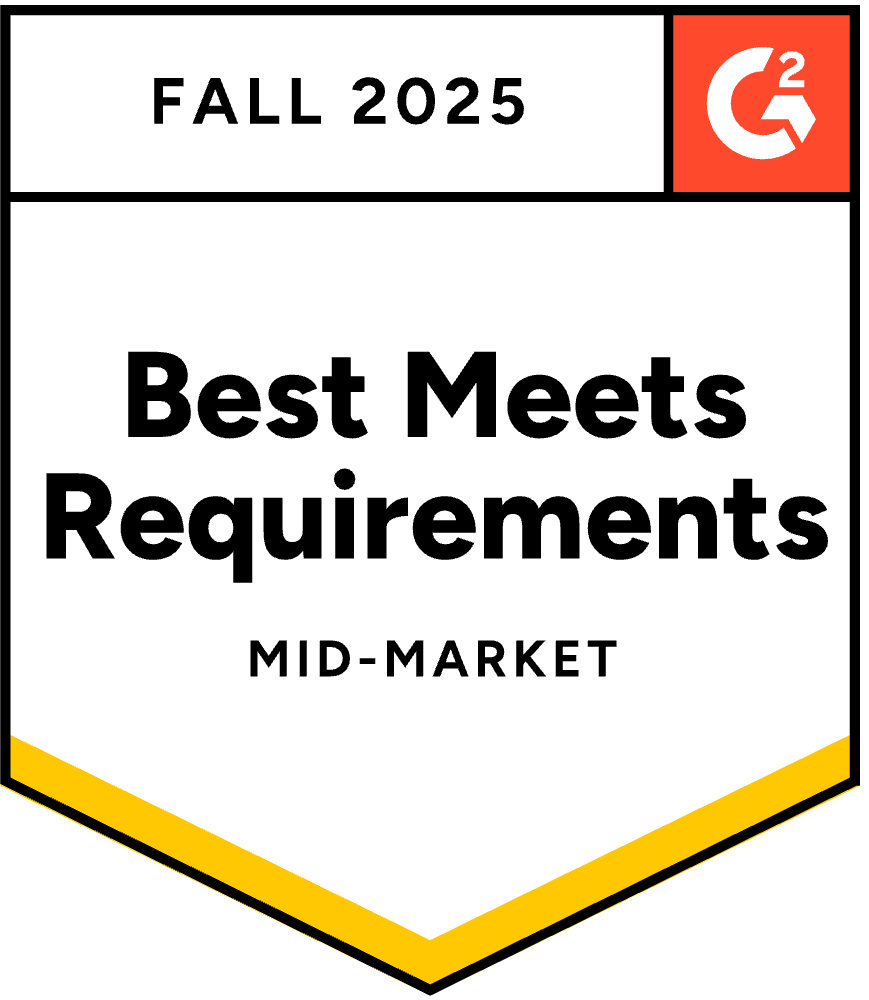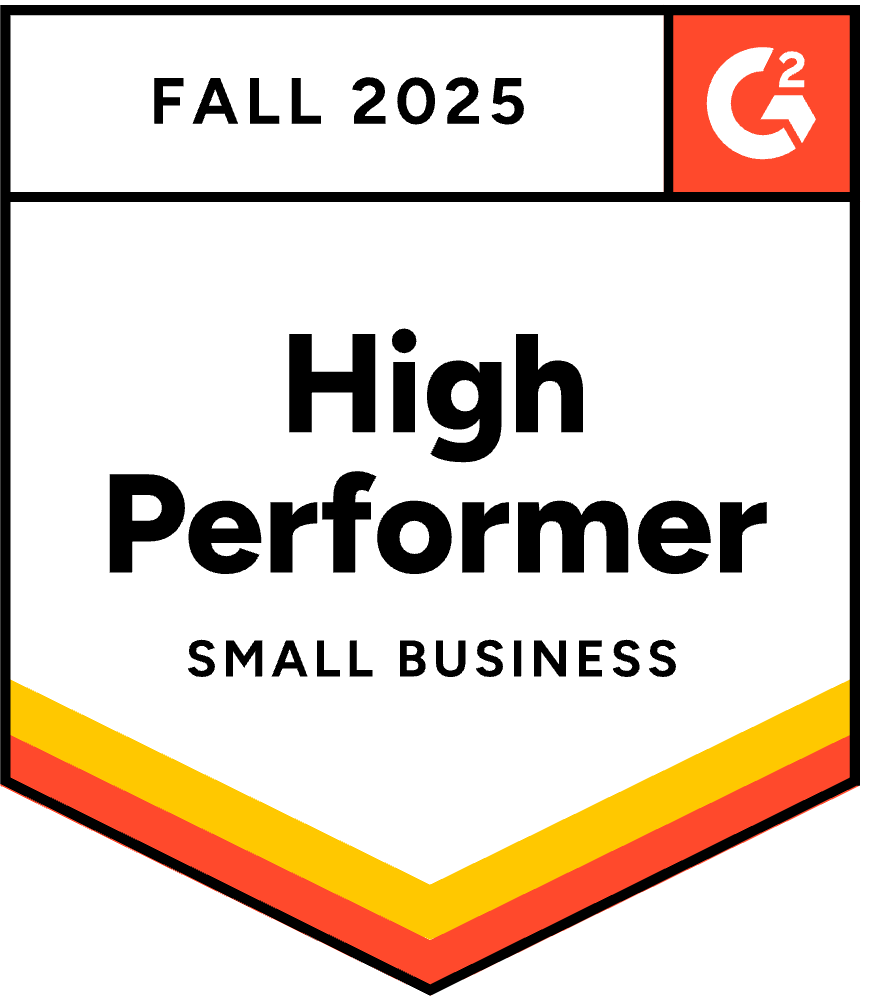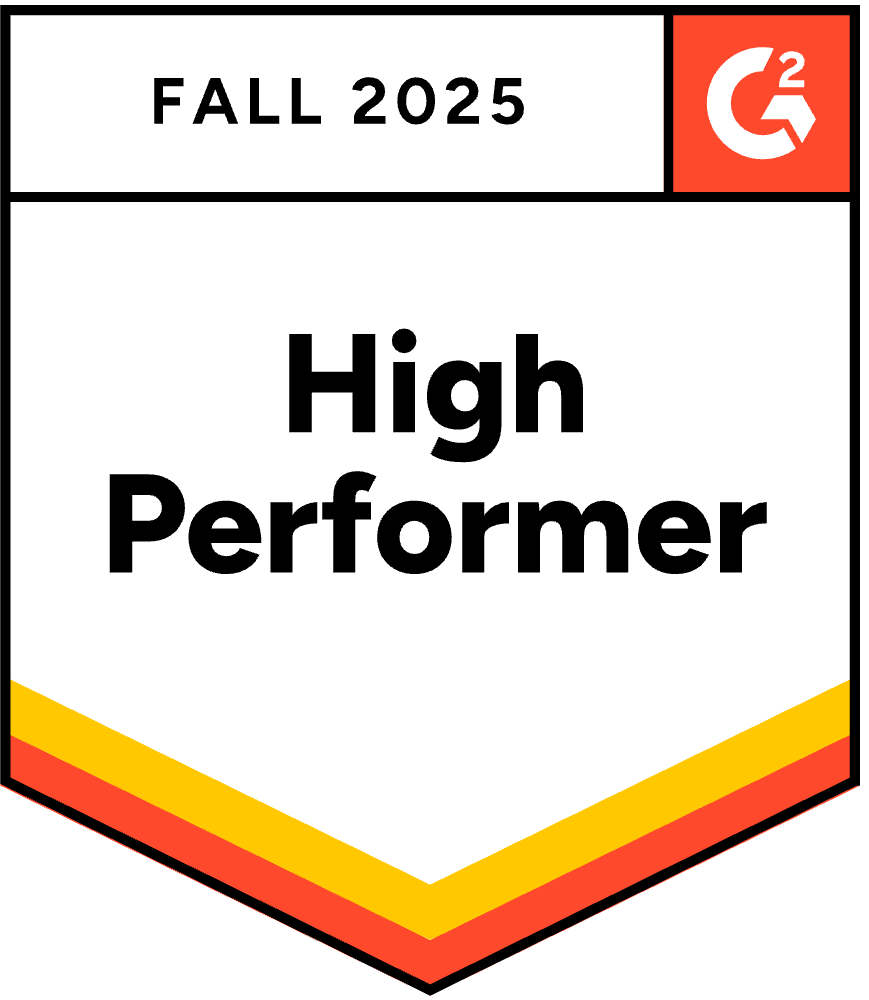6 Best Proposal Analytics Software in the United States
November 10, 2025
By
Evie Secilmis

Trying to close a deal without knowing if your proposal has even been read is like trying to fly a plane without an instrument panel. You’re flying blind, hoping you’re headed in the right direction. Proposal analytics software is your cockpit, giving you all the critical readouts you need. It shows you altitude (engagement), speed (how quickly they view it), and direction (who they forward it to). These insights allow you to make informed adjustments instead of just guessing. With a growing number of options for proposal analytics software in the United States, finding the right tool can equip your team with the visibility needed to land more deals with confidence.
Key Takeaways
- Understand what happens after you hit send: Proposal analytics software shows you exactly how prospects engage with your documents. Use these insights to time your follow-ups perfectly and focus on what your client truly cares about.
- Choose a tool that solves real problems: Don't get lost in a long list of features. Prioritize a platform that offers real-time tracking, automated reminders, and strong CRM integration to streamline your workflow and save valuable time.
- A smart implementation is key to seeing results: To get the most from your investment, focus on team adoption. Provide thorough training, establish clear data practices, and define your success metrics upfront to prove the software's impact on your win rates.
What is Proposal Analytics Software?
At its core, proposal analytics software is a tool that helps your sales team create, manage, and send sales documents like RFPs, SOWs, and quotes. But it’s the “analytics” part that really makes a difference. Instead of sending a proposal into the void and hoping for the best, this software gives you a clear view of what happens after you hit send. You can see who opened it, what sections they spent the most time on, and when they forwarded it to a colleague.
Think of it as your secret weapon for a smarter sales cycle. When you have this kind of insight, you can stop guessing and start making data-driven decisions. You’ll know the perfect moment to follow up, which parts of your proposal are resonating, and where you might be losing a prospect’s attention. For sales leaders who want to win more deals, this is a game-changer. In fact, teams that use proposal software have been shown to win up to 59% more deals. It’s about working more efficiently, understanding your clients better, and closing deals with confidence. An AI deal desk like Iris takes this even further by automating much of the creation process, freeing your team to focus on strategy and relationships.
Core Features and Why They Matter
The best proposal analytics software comes packed with tools designed to make your life easier. You’ll find features like customizable templates that ensure every proposal looks professional and stays on-brand, saving you hours of formatting. Many platforms now include AI and automation to help you generate accurate first drafts in minutes and handle tedious follow-ups. They also offer collaboration tools that let your team work together seamlessly on a single document.
One of the most powerful features is engagement tracking. This lets you see exactly when a client opens your proposal, how long they view each page, and what they click on. This information is gold because it tells you what your prospect cares about most. Plus, integrations with your CRM keep all your data in one place, reducing errors and ensuring everyone is on the same page.
How It Can Reshape Your Sales Process
Adopting proposal analytics software can fundamentally change how your team approaches sales. It shifts your process from being reactive to proactive. Instead of waiting for a response, you can follow up with a perfectly timed call, armed with insights about what the client is most interested in. By tracking metrics over time, you can identify what’s working and what’s not in your proposals. Are clients always getting stuck on the pricing page? Maybe it needs to be clearer.
This software gives you a direct line into your sales pipeline, helping you spot bottlenecks and uncover hidden opportunities. You can see which proposals are moving forward and which have stalled, allowing you to focus your energy where it matters most. Ultimately, these insights help you refine your strategy, improve your proposals, and build a more predictable sales engine.
Key Features to Look For
When you’re evaluating proposal analytics software, it’s easy to get lost in a long list of features. The right tool isn’t just about bells and whistles; it’s about solving specific problems that slow down your sales cycle and hurt your win rates. You need a platform that gives you clear insights, saves you time, and helps your team work together more effectively. Let’s break down the essential features that will actually make a difference in your day-to-day workflow and help you close more deals.
Track Engagement in Real-Time
Once you hit "send" on a proposal, you shouldn't have to guess what happens next. Real-time engagement tracking is a game-changer because it shows you exactly how your prospects interact with your document. You can see who opened it, when they opened it, and which sections they spent the most time on. This insight is invaluable. If a key decision-maker is re-reading your pricing page, it might be the perfect time for a follow-up call. These proposal analytics help you identify potential bottlenecks and address questions proactively, turning a passive waiting game into an active sales strategy.
Automate Your Follow-Ups
Following up is critical, but it’s also one of the easiest things to let fall through the cracks when your team is busy. Look for software that can automate this process for you. A great platform will let you set up automated reminders for clients who haven't viewed your proposal or for internal team members who need to approve a document. This kind of sales automation ensures that no deal stalls due to simple oversight. It keeps the momentum going and frees up your sales reps to focus on what they do best: building relationships and closing deals, not sending endless "just checking in" emails.
Measure What Matters: Engagement and Reporting
To improve your process, you have to measure it. Strong reporting features are non-negotiable. Your software should provide clear dashboards that track key performance indicators, like your win/loss rate, the time it takes to create a proposal, and your team's overall deal volume. By evaluating your performance, you can identify what’s working and what isn’t. Maybe proposals with video testimonials have a higher close rate, or perhaps a certain template consistently performs better. These insights allow you to refine your strategy based on hard data, not just a gut feeling.
Create Winning Templates, Faster
Your team shouldn't have to start from scratch every time a new request comes in. Proposal software with a robust template library is essential for both speed and consistency. You can create pre-approved, on-brand templates for all your common documents, from RFPs to SOWs. This ensures every proposal that goes out the door looks professional and contains accurate, up-to-date information. With a solid foundation in place, your team can quickly customize the content for each client, dramatically reducing the time it takes to generate a first draft and respond to opportunities.
Work Better Together with Collaboration Tools
Proposals are rarely a solo effort. They often require input from sales, marketing, legal, and technical experts. The best software includes built-in collaboration tools that make teamwork seamless. Features like in-line commenting, version control, and user-based permissions allow everyone to contribute to the same document without creating a mess of conflicting files. This is a core component of an effective AI deal desk solution, as it ensures all stakeholders can work together efficiently to build the strongest possible proposal, no matter where they are.
Keep Your Data Safe and Compliant
Proposals contain some of your most sensitive company and client information. That’s why data security and compliance are absolutely critical. The software you choose must have strong security protocols to protect your data from unauthorized access. Look for platforms that are compliant with major regulations like SOC 2, GDPR, and CCPA. Prioritizing data privacy not only protects your business from risk but also builds trust with your clients, showing them that you take the security of their information as seriously as you take your own.
A Look at the Top Proposal Analytics Tools
Choosing the right proposal analytics software really comes down to your team’s specific needs, sales process, and the tools you’re already using. Some platforms are built for speed and simplicity, while others offer deep, enterprise-level features. To help you find the perfect fit, I’ve broken down some of the top contenders in the market. We’ll look at what makes each one unique, who it’s best suited for, and the key features that can help your team close more deals. Think of this as your starting point for finding a tool that not only tracks your proposals but actively helps you win.
HeyIris.ai
If your team spends a significant amount of time responding to complex documents like RFPs, RFIs, and security questionnaires, HeyIris.ai is a game-changer. It uses AI to dramatically speed up the entire response process, helping you generate accurate first drafts in a fraction of the time. What makes Iris stand out is its ability to serve as a central deal desk, ensuring your information is always consistent and up-to-date across all your documents. It even proactively flags outdated content. For sales teams aiming to increase their deal volume and win rates without getting bogged down in paperwork, Iris’s platform offers a smart, streamlined solution.
Proposify
Proposify is designed to manage the entire sales document workflow, from creation to closing. It’s a solid all-around tool for teams that want to streamline how they create, send, and track proposals, quotes, and contracts. The goal here is to make your sales process feel smoother and more professional, giving you the insights you need to see when clients are engaging with your documents. If you’re looking for a reliable way to improve how your proposals look and perform, Proposify is a well-regarded option that helps teams stay organized and close deals more efficiently.
PandaDoc
PandaDoc is a great fit for larger companies that need a comprehensive system for all their sales documents, not just proposals. It’s more of an all-in-one document management solution. With a massive template library, legally binding e-signatures, and advanced pricing tools available in its higher-tier plans, it can handle complex workflows. If your organization needs a robust platform to manage a high volume of documents and requires tight control over branding and content, PandaDoc has the enterprise-level features to support your needs.
GetAccept
For sales teams that live inside their CRM, GetAccept is a top choice. It’s known for its powerful and seamless integrations, especially with Salesforce, which helps keep all your data in one place. One of its standout features is a dynamic editor that lets you embed videos and add live chat directly into your proposals, making them more engaging and interactive. If your strategy relies on creating a personalized, high-touch experience for your prospects and you need your proposal tool to work perfectly with your existing CRM, GetAccept is built for you.
Qwilr
If presentation is everything for your brand, Qwilr is the tool you’ll want to check out. It’s designed for modern sales teams that prioritize beautiful, compelling design. Instead of sending static PDFs, Qwilr lets you create interactive, web-based proposals that look stunning on any device. It features an intuitive block editor that makes it easy to build visually rich content, and its pricing tools can connect directly to your CRM for a smooth workflow. For creative agencies or any business where a polished, modern aesthetic is crucial, Qwilr helps your proposals stand out from the competition.
Better Proposals
Better Proposals is ideal for sales teams that want a tool that’s both well-designed and easy to implement. It focuses on getting you up and running quickly without a steep learning curve. The platform offers clean, professional-looking templates and integrates smoothly with popular CRMs like HubSpot. It also includes a content library, so you can save and reuse your best-performing sections to build new proposals faster. If you need a straightforward solution that delivers great results without a lot of fuss, Better Proposals is a fantastic option for teams that value speed and simplicity.
Breaking Down the Costs and ROI
Investing in new software always comes down to one big question: is it worth it? When it comes to proposal analytics tools, the answer isn't just about the sticker price. It's about understanding the full financial picture—from subscription fees to the incredible value you get back in time saved and deals won. Let's break down what you can expect to spend and, more importantly, how you can measure the return on your investment. This isn't just another expense; it's a strategic move to make your sales process smarter and more profitable.
Decoding Subscription Plans
Most proposal analytics tools operate on a subscription basis, typically billed monthly or annually per user. You’ll find that plans are often tiered, with names like "Basic," "Team," or "Business." Each tier unlocks different features, a higher number of documents you can send, and varying levels of customer support. For example, a basic plan might offer simple tracking, while a business plan provides advanced analytics, CRM integrations, and dedicated support.
When you’re comparing options, look beyond the price. Scrutinize the feature list for each tier. Does the entry-level plan include the real-time engagement tracking you need, or is that reserved for a more expensive package? Make sure you’re comparing apples to apples to find a plan that truly fits your team’s workflow and budget without forcing you into a premature upgrade. A clear understanding of these software pricing models can help you make a more informed decision.
Find the Right Fit: Enterprise vs. Small Business
The right software for a five-person startup will look very different from what a 500-person enterprise needs. Smaller teams often prioritize simplicity and affordability. They need a tool that’s easy to set up and use right away, without a steep learning curve or a hefty price tag. The goal is to streamline their process and look professional without needing a dedicated IT team to manage the software.
On the other hand, larger organizations require scalability, robust security features, and deep integrations with their existing tech stack, like Salesforce or HubSpot. They need a platform that can handle high proposal volumes and provide granular analytics for multiple teams. As you evaluate options, consider where your business is headed. Choosing a tool that can grow with you will save you the headache of migrating to a new system down the road. Seeing how other companies have successfully implemented these tools can provide valuable insight, like in this GovSpend case study.
Watch Out for Hidden Costs
The monthly subscription fee is just the starting point. To get a true sense of the total cost, you need to dig a little deeper and ask about potential additional expenses. Some companies charge one-time setup or implementation fees to get you started. Others may require you to pay for team training sessions to ensure everyone knows how to use the platform effectively.
Also, be sure to clarify what happens if your needs change. What’s the cost of adding new users? Are there limits on the number of proposals you can send or the amount of data you can store? Do premium integrations with other software tools cost extra? Thinking about both proposal creation and long-term proposal management will help you anticipate these costs. Don’t be afraid to ask for a detailed quote that outlines every potential charge so there are no surprises later.
How to Measure Your Return on Investment
This is where proposal analytics software truly shines. The real value isn't just in the features; it's in the measurable impact on your bottom line. Your return on investment (ROI) comes from two key areas: efficiency gains and improved performance. By automating tedious tasks and providing clear insights, these tools give your team more time to focus on what they do best—selling.
To track your ROI, focus on a few key performance indicators (KPIs). Start by measuring the time it takes to create and send a proposal before and after implementing the software. You can also track your proposal volume, win rate, and the average sales cycle length. The analytics dashboard will give you direct insight into client engagement, showing you which sections of your proposals are most compelling. This data helps you refine your templates, address bottlenecks, and ultimately, close more deals.
Setting Up for Success: Implementation and Integration
Choosing the right proposal analytics software is a huge step, but how you introduce it to your team and your tech stack is what really makes it stick. A thoughtful rollout can make the difference between a tool that gathers dust and one that becomes the MVP of your sales process. The goal is to make the transition smooth, get your team excited, and start seeing valuable insights right away. Let's walk through the key steps to get your new software up and running successfully.
Set Up Your Analytics Dashboard
Think of your analytics dashboard as the command center for your entire proposal process. This is where you’ll get a clear, at-a-glance view of what’s working and what isn’t. When you first set it up, focus on the metrics that matter most to your team, like open rates, time spent on each section, and conversion rates. A well-configured dashboard helps you spot engagement patterns and identify bottlenecks before they derail a deal. By customizing your view, you can turn raw data into actionable proposal analytics that guide your team toward smarter follow-ups and higher win rates.
Integrate with Your Current Tools
Your new proposal software shouldn’t live on an island. To get the most out of it, you need to connect it with the tools your team already uses every day, especially your CRM. Integrating your systems creates a single source of truth, eliminates tedious double-entry, and ensures a smooth flow of information from one stage of the sales cycle to the next. This connectivity is a hallmark of modern, cloud-based software, allowing you to sync customer data, track proposal status within your CRM, and automate workflows. A tool like Iris is designed to fit right into your existing tech stack, making your entire process more efficient.
Keep Your Data Clean
The insights you get from your analytics software are only as good as the data you put into it. Inaccurate or inconsistent data can lead to misleading reports and poor decision-making. Before you go live, take some time to clean up your existing contact and company information. Establish clear guidelines for your team on how to enter and manage data moving forward. Regularly auditing your data helps maintain its quality and ensures your analytics are reliable. While it might feel like a chore, maintaining good data hygiene is one of the biggest data analytics challenges you can solve proactively.
Get Your Team On Board
Introducing a new tool means changing habits, which can be met with resistance. The key to successful adoption is showing your team how the software makes their jobs easier, not harder. Start with comprehensive training that focuses on the specific features that will help them close more deals. Highlight the benefits, like automated follow-ups and insights into what clients are actually reading. It’s also helpful to identify a few team members to become internal champions who can offer support to their peers. When your team understands the "why" behind the change and feels confident using the new system, they’re more likely to embrace it as an essential part of their daily workflow.
The Power of AI and Advanced Analytics
It’s one thing to track what’s happening with your proposals, but it’s another to predict what will happen next. This is where artificial intelligence and advanced analytics come in, completely changing how sales teams approach their work. Instead of just reacting, you can be proactive. AI-powered tools dig through your data to find patterns and insights you might miss, helping you make smarter, faster decisions. This isn't about replacing your intuition; it's about backing it up with solid data to give every proposal its best shot at winning.
What Machine Learning Can Do for You
Think of machine learning as your team's personal data scientist. It sifts through all your past proposal data—wins, losses, client feedback, and engagement metrics—to spot what works. These algorithms can identify the specific language, pricing, or content that resonates most with certain types of clients. The result? You get actionable insights that help you craft more compelling proposals from the start. Instead of guessing, you’re using a data-driven approach to tailor your content, which is a core benefit of AI-powered software for any sales team looking to get an edge.
Predict Your Next Win with Analytics
Imagine knowing which deals are most likely to close before you even send the proposal. That's the power of predictive analytics. This technology analyzes engagement patterns and historical data to forecast outcomes and flag potential risks. For example, if a key stakeholder hasn't opened the pricing page, the software can alert you to follow up. These predictive capabilities help you focus your energy on the opportunities with the highest chance of success and address challenges before they derail your pipeline, ultimately improving your win rates.
Tailor the Software to Your Needs
No two sales teams operate the same way, so your analytics software shouldn't be a one-size-fits-all solution. The best tools allow you to customize your dashboards and reports to focus on the metrics that matter most to your business. Whether your priority is tracking buyer engagement, streamlining internal workflows, or ensuring brand consistency, you can tailor the software to your specific goals. This flexibility ensures you’re not overwhelmed by irrelevant data and can leverage the features that directly support your unique sales process.
Access Your Data On the Go
Deals don’t stop moving just because you’ve stepped away from your desk. The demand for mobile access to business tools is growing rapidly, and proposal analytics software is no exception. Being able to check on a proposal's status, review engagement analytics, or respond to a client question from your phone is crucial for keeping momentum. This anytime, anywhere access means your team can make informed decisions on the fly, ensuring that opportunities are never missed simply because someone was out of the office.
Common Challenges (and How to Solve Them)
Adopting any new software comes with a few bumps in the road, and proposal analytics tools are no exception. The good news is that these challenges are completely manageable with a bit of planning. Think of it less as a roadblock and more as a detour—knowing the common issues ahead of time helps you prepare so you can get to your destination faster. From messy data to getting your team on board, let's walk through the most frequent hurdles and, more importantly, how to clear them with confidence.
Solving Data Quality Problems
If your data is a mess, your analytics will be, too. It’s that simple. Inaccurate or inconsistent information leads to misleading insights, which can cause you to make the wrong calls on important deals. The best way to tackle this is by establishing clear data governance from the start. This means setting rules for how data is entered, managed, and updated across your systems. An AI-powered tool like Iris can be a huge help here, as it can proactively identify outdated information, ensuring your proposals are always built on a foundation of accurate, reliable data.
Overcoming Integration Hurdles
Asking your team to abandon their comfortable, familiar workflows is a tough sell. Resistance often comes from the fear that a new tool will complicate their process rather than simplify it. To make the transition smoother, choose a proposal analytics software that integrates seamlessly with the tools your team already uses every day, like your CRM. When the new software fits into their existing process, it feels less like a disruption and more like an upgrade. Proper training is also key—focus on how the tool solves their specific pain points and makes their jobs easier.
Encouraging Team Adoption
You can have the best tool in the world, but it won't do you any good if no one uses it. Low adoption is often a sign that the team doesn't see the value or wasn't included in the decision-making process. The solution? Involve them from the beginning. Ask your sales and proposal teams what their biggest challenges are and show them exactly how the new software will help. When they feel heard and see a clear "what's in it for me," they're far more likely to embrace the change. Effective training that is tailored to their roles will also make them feel confident and capable.
Manage Costs Effectively
It can be tricky to prove the value of a new software investment if you don't know what you're measuring. Before you even sign a contract, you need to define what success looks like for your team. Do you want to reduce the time it takes to create a proposal? Increase your win rate by a certain percentage? Establish these clear metrics upfront. Then, use your software’s analytics to track your progress against these goals. This approach allows you to continuously demonstrate the ROI and justify the investment to leadership, ensuring everyone sees the clear business impact.
What's Next for Proposal Analytics?
The world of proposal analytics is constantly evolving, and the tools we use are getting smarter, faster, and more intuitive. Staying ahead of the curve means understanding where the technology is headed. The future isn’t about just tracking opens and clicks anymore; it’s about leveraging sophisticated technology to work more efficiently and make better strategic decisions. From smarter AI to seamless integrations, here are the key trends shaping the future of proposal analytics software.
Smarter AI and Automation
Artificial intelligence and machine learning are becoming central to how modern proposal analytics tools operate. These technologies are getting much better at handling the tedious data management and analysis tasks that used to eat up so much of your team's time. The emerging trends in proposal management show a clear move toward smarter automation, which helps improve the accuracy of your proposals. This allows your team to step back from manual data entry and focus on what really matters: crafting a winning strategy and building client relationships.
The Shift to the Cloud
The demand for cloud-based software continues to grow, and the proposal analytics market is no exception. More organizations are choosing Software-as-a-Service (SaaS) solutions because they offer the flexibility and security that modern sales teams need. A cloud-based platform makes it easier to scale your operations as your team grows and ensures everyone can collaborate effectively, whether they're in the office or working remotely. This shift is a major driver in the proposal management software market, pushing for more accessible and collaborative tools.
A Focus on Better User Experience
As AI becomes more powerful, there's a parallel focus on making these advanced tools genuinely easy to use. A clunky interface can stop even the most powerful software from being adopted. That's why developers are prioritizing a better user experience with cleaner designs and more intuitive navigation. With features like augmented data management, you can sort through complex information and pull out key insights quickly, without needing a degree in data science. The goal is to make powerful analytics feel effortless.
Deeper Integration Capabilities
Proposal analytics software no longer lives on an island. The future is all about deeper connections with the other business applications you use every day, like your CRM and sales enablement platforms. This concept of embedded business intelligence ensures a seamless flow of information across your entire tech stack. When your proposal tool talks directly to your other systems, you get a more complete picture of your sales process. This makes your analytics more actionable and helps your team make smarter, data-driven decisions without having to switch between a dozen different tabs.
Related Articles
- The 5 Best RFP Scoring and Analysis Software Tools
- 5 Best RFP Keyword Analysis Tools to Win More Bids
- RFP Software Comparison: Choose the Right Tool
- 6 Best Sales Proposal Automation Software Tools
Frequently Asked Questions
How is this different from a simple e-signature tool? Think of an e-signature tool as the final step in the race—it’s all about crossing the finish line. Proposal analytics software, on the other hand, is your coach for the entire race. It helps you build the proposal with professional templates, lets your team collaborate seamlessly, and then gives you real-time feedback on your performance. You can see exactly which parts of your proposal a client is reading, which helps you tailor your follow-up and have much smarter conversations.
Will this software really help us win more deals, or does it just add another task for my team? It’s a fair question. The goal isn’t to add more work but to make the work you’re already doing more effective. By showing you what clients care about most, you can stop guessing and start having targeted conversations. Instead of a generic "just checking in," you can call and address the specific sections they focused on. This insight helps you overcome objections and guide the conversation, which directly contributes to moving deals forward and improving your win rate.
Is proposal analytics software only for large enterprise teams? Not at all. While large organizations certainly benefit from the scalability and deep analytics, smaller teams often see a huge impact. For a small business, saving time on proposal creation with templates and automating follow-ups frees up incredibly valuable resources. It also helps you look just as professional and organized as your larger competitors, leveling the playing field and helping you close deals with confidence.
How long does it typically take to get set up and start seeing results? The setup time can vary, but many modern platforms are designed to be user-friendly and can be up and running in just a day or two. You can start seeing engagement analytics, like who opened your proposal and when, almost immediately. Measurable results, such as an increase in your win rate or a shorter sales cycle, will become clearer over a few months as you gather more data and use the insights to refine your strategy.
My team's proposal content is all over the place. Can this software help with that? Absolutely. This is one of the biggest problems these tools are designed to solve. Most platforms include a central content library where you can store all your approved, up-to-date information, from case studies to security details. This ensures everyone on your team is pulling from the same source of truth. An AI-powered system like Iris takes it a step further by helping you manage this information and even flagging content that might be outdated, so every proposal goes out the door looking consistent and accurate.
Share this post
Link copied!



